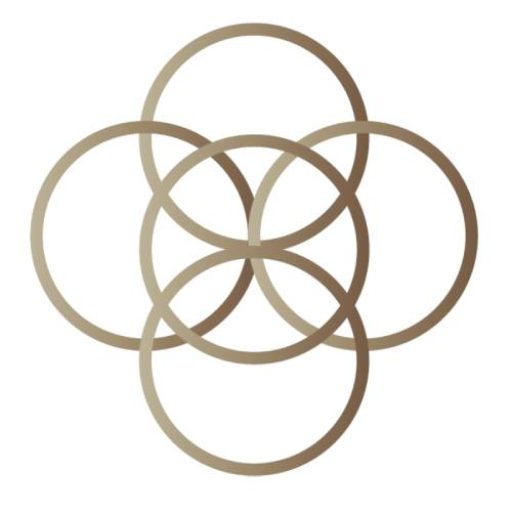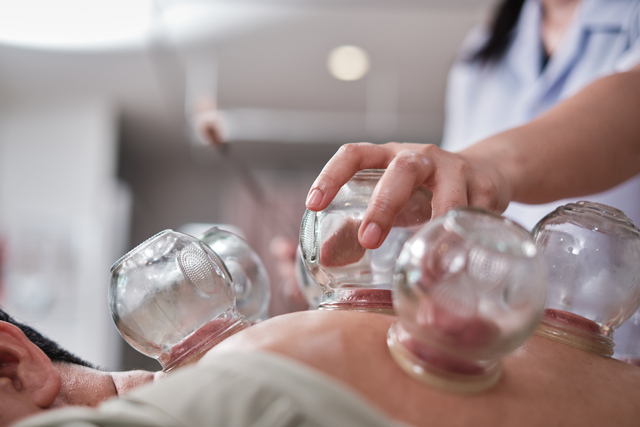Take Care of Yourself...
Where the Art & Science of Massage Restore Balance

Exploring Cupping Therapy: Ancient Healing for Modern Wellness
 Cupping therapy has seen a surge in popularity in recent years, especially among athletes, wellness enthusiasts, and individuals seeking natural approaches to pain relief and overall wellness. But this ancient healing technique isn’t new—it dates back thousands of years and has roots in traditional Chinese, Middle Eastern, and Egyptian medicine. At Wellness Innovations, we incorporate both modern and traditional cupping methods as part of our clinical and therapeutic massage services to help our clients in Rockford and Princeton, Illinois, experience the restorative benefits of this unique therapy.
Cupping therapy has seen a surge in popularity in recent years, especially among athletes, wellness enthusiasts, and individuals seeking natural approaches to pain relief and overall wellness. But this ancient healing technique isn’t new—it dates back thousands of years and has roots in traditional Chinese, Middle Eastern, and Egyptian medicine. At Wellness Innovations, we incorporate both modern and traditional cupping methods as part of our clinical and therapeutic massage services to help our clients in Rockford and Princeton, Illinois, experience the restorative benefits of this unique therapy.
What is Cupping Therapy?
Cupping therapy is a form of alternative treatment where special cups are placed on the skin to create suction. This suction is believed to increase blood flow, relieve muscle tension, and promote cell repair. Traditionally, cups were made from bamboo or ceramic, but modern versions use glass, silicone, or plastic.
There are different styles of cupping therapy, but the two most common types are:
- Dry cupping: Involves simply placing suction cups on the skin.
- Wet cupping (Hijama): Involves suction followed by a small incision to draw out a small amount of blood (not typically offered in Western wellness settings).
Cupping can also be static (stationary cups) or dynamic (moving cups), depending on the technique and goals of the session.
How Cupping Therapy Works
The suction created by the cups pulls the skin slightly upward, which may seem counterintuitive compared to traditional massage (which presses downward). This negative pressure encourages increased circulation to the targeted area, loosens connective tissue, and promotes detoxification through lymphatic drainage.
The cups are usually left in place for 5–15 minutes. In dynamic cupping, therapists may move the cups gently over muscles, combining cupping with massage techniques for deeper tissue manipulation.
Benefits of Cupping Therapy
Cupping therapy offers a wide array of health benefits, particularly when administered by trained professionals such as those at Wellness Innovations:
- Pain Relief
One of the most common reasons people seek cupping is to reduce muscular pain and stiffness. It’s particularly effective for:
- Back and neck pain
- Shoulder tension
- Fibromyalgia
- Migraines
- Improved Circulation
By increasing blood flow to treated areas, cupping helps promote oxygenation and nutrient delivery to tissues, which can accelerate healing.
- Relaxation and Stress Reduction
Many clients find the sensation of cupping deeply relaxing, especially when integrated into a massage session. It can help soothe the nervous system and alleviate symptoms of anxiety and tension.
- Detoxification and Immune Support
Cupping stimulates the lymphatic system and may assist in flushing out toxins. This can give the immune system a gentle boost and help the body recover from illness.
- Improved Range of Motion
Athletes and active individuals often use cupping to break up fascial adhesions and scar tissue, improving flexibility and muscle function.
- Treatment for Respiratory Conditions
Cupping is sometimes used on the upper back to help with colds, asthma, and bronchitis by stimulating lung function and opening up the chest.
Potential Drawbacks and Considerations
While cupping is generally safe when performed by trained professionals, there are a few considerations and side effects to keep in mind:
- Temporary Bruising or Marks
Cupping often leaves round, purplish marks that can last a few days to a week. These are not bruises in the traditional sense but a result of broken capillaries from suction. They are typically painless but may be a cosmetic concern for some.
- Mild Discomfort During Treatment
Some clients may feel a tight or pulling sensation during the procedure. Communication with your therapist is important to ensure comfort throughout the session.
- Skin Irritation
In rare cases, cupping can cause irritation, blistering, or infection—especially if performed improperly. This is why it’s crucial to seek treatment from licensed and experienced professionals.
- Not for Everyone
People with certain medical conditions (such as bleeding disorders, skin ulcers, or certain types of cancer) or those who are pregnant should consult their physician before undergoing cupping therapy.
Is Cupping Right for You?
Cupping therapy isn’t a cure-all, but when integrated into a comprehensive wellness plan, it can offer noticeable benefits. Whether you’re recovering from a sports injury, dealing with chronic pain, or just looking for a natural way to reduce stress and tension, cupping may be a valuable addition to your self-care regimen.
At Wellness Innovations, we offer customized cupping sessions as part of our clinical and therapeutic massage services. Our skilled therapists assess each client’s unique needs and integrate cupping as a complementary tool to support healing and relaxation.
Wellness Innovations – Your partners in clinical and therapeutic massage solutions.
Serving Rockford and Princeton, IL with excellence in holistic care.
